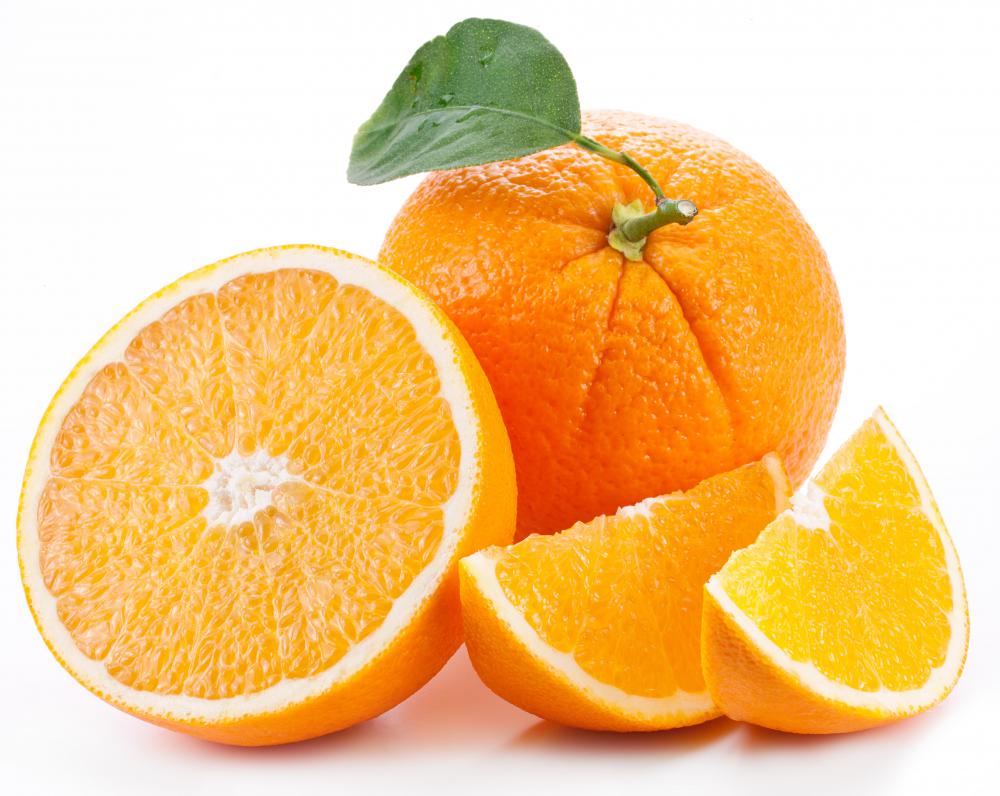At DelightedCooking, we're committed to delivering accurate, trustworthy information. Our expert-authored content is rigorously fact-checked and sourced from credible authorities. Discover how we uphold the highest standards in providing you with reliable knowledge.
How Do I Choose the Best Navel Orange?
You can choose the best navel orange based on its appearance and weight. Smell is another way to choose the best navel orange. When you pick up the fruit, it should have a fragrant, citrusy scent. Its flesh should be even and not bruised.
Navel oranges are one of the more common types of orange available. They take their name from the fact that the small indentation on one end of the fruit looks like a human belly button. The best navel oranges are sweet and very juicy.

You can tell that a navel orange will be juicy based on its weight. When you pick up the orange, it should feel heavy in your hand. Even a small orange should have some heft to it, as that means the fruit is full of plenty of juice and flavor. Oranges that feel light are most likely dried out and may be sour to taste. The texture of a dried-out orange will be spongy and unpleasant.

When you pick up a navel orange, it should not only feel heavy, but its flesh should be firm. If parts of the skin of the orange are soft and squishy, it won't be at its best in terms of taste or texture. The skin should feel as though it is attached to the fruit all across the orange. Put any orange back that feels as though the skin has separated from the fruit or as though there are air pockets under the skin. That can be a sign of decay.
Navel oranges should have a pleasant smell. Ideally, they will smell like an orange. Any other scent, such as of must or mold, is a sign that the orange is past its prime. Trust your nose and put back any navel orange that doesn't smell quite right.

The color of the skin of the orange is slightly less important when picking out the best fruit. Some navel oranges may have slightly green skins but still taste delicious. Others may have patches of rough brown spots that do not impact the taste or quality of the fruit.
Some discolorations on the skin are warning signs that the fruit isn't at its best. White patches on the skin of the orange can indicate damage to the fruit, which may result in bruising. Mold on the surface of the orange is never a good sign either.
AS FEATURED ON:
AS FEATURED ON:













Discussion Comments
A grocer once told me that some navel oranges are loose in the peel because of in-breeding. In-breeding is not a bad thing with navel oranges, since they can't reproduce through seeds.
I know when I've chosen a good navel orange when I start peeling it and the peel separates very easily. When the peel on a navel orange clings tightly to the fruit, it's almost always underripe and sour. If the fruit falls out of the peel with little effort, it's usually very sweet.
Post your comments